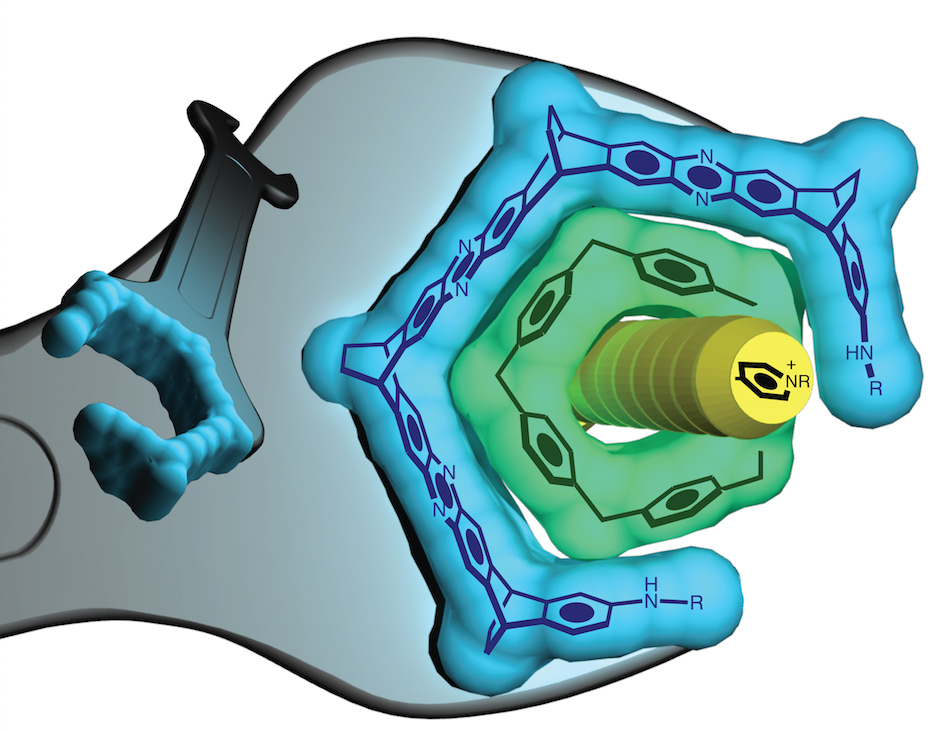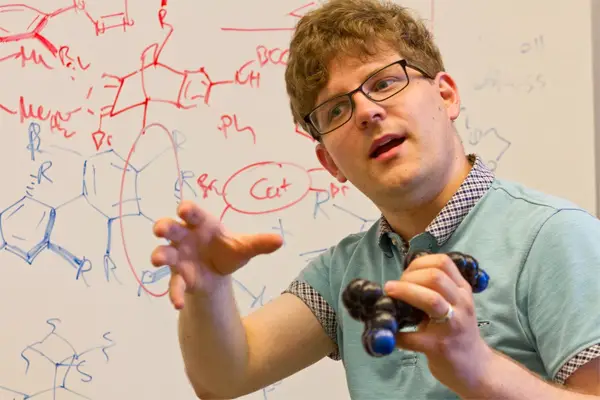
26th September 2015 A wrench just 1.7 nanometres wide Scientists have built a wrench just 1.7 nanometres wide, providing a fundamentally new way to control the shape of molecules.
Chemists at the University of Vermont (UVM) have created a nanoscale wrench that enables the precise control of nanoscale shapes. Their use of "chirality-assisted synthesis" is a fundamentally new approach to shaping large molecules – one of the foundational needs for producing complex synthetic materials, including new polymers and medicines. Chirality is a property of asymmetry, important in various fields of science. The word chirality is derived from the Greek for "hand", a familiar chiral object. If an object or system is "chiral", it is distinguishable from its mirror image; in other words, it cannot be superposed onto it. Assistant Professor of Chemistry, Severin Schneebeli, Ph.D., and colleagues experimented with anthracene, a substance found in coal. They assembled C-shaped molecules that, because of their chirality, are able to join each other in only one direction. "They're like Legos," says Schneebeli. These form a rigid structure that's able to hold rings of other chemicals "in a manner similar to how a five-sided bolt head fits into a pentagonal wrench." Unlike many chemical structures – which are flexible and can twist or rotate into countless different possible shapes – "this has only one shape," Schneebeli says. "It's like a real wrench," he adds, but 100,000 times smaller than the width of a human hair: just 1.7 nanometres. "It completely keeps its shape," even in various solvents and at many different temperatures, "which makes it pre-organised to bind to other molecules in one specific way."
This nano-wrench can adjust the chemical environment inside pillarenes (an emerging class of large molecules that can serve as building blocks for molecular recognition and self-assembly), in the same way a mechanic can turn an exterior bolt to adjust the performance inside an engine. The wrench can make the binding inside pillarene rings "about one hundred times stronger," Schneebeli says. Also, "because this kind of molecule is rigid, we can model it in the computer and project how it looks before we synthesise it in the lab," says theoretical chemist Jianing Li, a co-author who produced detailed simulations of how the wrench would work. "This is a revolutionary idea," she explains. "We have 100% control of the shape, which gives great atomic economy and lets us know what will happen before we start synthesising in the lab." The team hopes their research could lead to "new materials, perhaps for safer helmets or materials for space," for example. "In the big picture, this work points us toward synthetic materials with properties that, today, no material has," Schneebeli concludes. The UVM team's results are presented in the top-ranked chemistry journal Angewandte Chemie.
Comments »
|








